Markuszowa (Oparówka)
Borough of Wiśniowa , Strzyżowski District, Podkarpackie VoivodshipType of place
A forestInformation about the crime
In May 2022, we visited the site of a post-Jewish forest hideout, which became the place of death and burial of dozens of people hiding there. The hideout, or rather a network of dugouts, was located at the top of a hill in the Strzyżów Forest District in the Wiśniowa borough.
“From the summer of 1942, a group of Jews from Frysztak, Jasło, and Markuszowa itself were hiding in dugouts in the forests lying on the outskirts of the villages of Kozłówek, Oparówka, Markuszowa, and Łęki Strzyżowskie. […] In the summer of 1942, when the Germans began the liquidation of Jews in the Krosno and Strzyżów districts, some of the Jews managed to escape. They used their pre-war connections mong Polish residents to get help to hide. Despite the danger involved, some Poles agreed to help their Jewish friends. They helped to find suitable places in the forests, to build hiding places, and, above all, to provide food for the people staying there. At the end of the summer of 1942, at least 40 people were hiding in five dugouts in the forest complex:
Ajzyk Diament with his wife and two-year-old daughter Freda, Ajzyk’s brother Kiwa Diament, Henek Musler, Maria Birman, Peśka Birman, Leib, Jankiel, Aron and Efroim Apfelbaum, two women from the Gazda family, Majer Blum with his wife and son, Sara and Salomon (Shlomo) Schmidt, Helena (Chuma) and Henryk (Herman) Weitz with their daughter Gołda and son Monk, and Henryk’s brother Moses Weitz with his wife Helena, his daughter Rosa and his son Tobi. […]
The Germans found out about the hiding place of the Jews and conducted several roundups on them. The first one took place as early as 1942. The others took place in 1943 in February, early spring, and the last one at the end of June. However, it is impossible to establish their course, as Jewish testimonies are lacking. The accounts of the Poles are pretty general on this subject. Only the gamekeeper Jan Pietryk testified about the first German action against the fugitive Jews. According to him, about 20 military policemen from Frysztak, Jasło, and Wiśniowa took part in the action. It was supposedly initiated by Karl Perschke. Officers shot four women, and the rest of the Jews fled.
The most is known about the second German action. Two Poles – Jan Pietryka and Adolf Głowacki- dramatically described these events. Pietryka, who was an eyewitness, testified after the war that on 28 February 1943, the Germans forced him to show them one of the Jewish hideouts. It was marked on a sketch that the military police brought. When they got there, it turned out that the Jews had escaped. Following the traces of the fugitives, the Germans found another hideout: We spotted a bunker in the ravine by the river. Smoke was rising from the chimney. All the Jews from the other empty bunkers took refuge here. One of the military policemen approached the bunker and threw two grenades through the chimney inside. According to Pietryka, the explosion killed four people and stunned the others. They were dragged out of the dugout and shot. Among the murdered were six children aged 3-6 and two young women aged 17-18.
Grochowski confirms Pietryka’s testimony: After some time, I heard shots and explosions of grenades coming from the forest. After about five hours, I saw the Germans leaving the forest. When I ensured they had all gone, I went to the shelters with Wojciech Janas and my sister, Michalina Król. The Germans burnt the shelters closer to Markuszowa. Following the traces of Jews who escaped from these shelters, we went to hideouts located closer to Łęki, which I did not even know existed. There, we saw a pile of Jewish corpses in the creek bed. […] After the roundup ended, the village guards buried the shot Jews on the Germans’ orders. One of the guards, Jozef Domino of Markuszowa, told me that 36 Jews were shot: men, women, and children. I later learned from […] gamekeeper Szymon Niemiec and gamekeeper Jan Pietryka, whom the Germans were taking with them to the forest […], that the Germans threw a grenade through the chimney into the hiding places, which stunned the Jews and wounded them. Then, one by one, they dragged them out of their hiding place and shot them by the creek. Several Jews were shot while trying to escape.
After the roundup, the Jews posted guards in the forest to warn them of the approaching Germans. Thanks to this, most of them managed to escape during the subsequent German roundup, which covered the forest near Kozłówek and Oparówka. Among them was the four-member Diament family, […] who took refuge in the home of Stanisław Puc. His wife and brother returned to the forest, and the girl, Fredzia, stayed with a Polish family and survived the war. Her family died in June 1943 in the fourth German roundup, which covered the villages of Kozłówek and Oparówka (Rączy 2010 in: Niepiękny wiek XX, Warsaw 2010).
IDENTIFICATION OF THE GRAVE BASED ON NON INVASIVE RESEARCH
On May 17, 2022, we carried out a site inspection to locate the mass grave or graves of about 40 victims (approximate GPS coordinates: N 49°50.139′ E 021°40.826′).
One of the hills of the Czarnorzecko-Strzyżowski Landscape Park has been identified as a mass grave or graves site.
The relief survey (LiDAR) shows an apparent ground disturbance on the southwest side of the hill. The selected C-shaped ground may be a remnant of the hiding place and the location of the buried bodies.
An aerial photography query for this area wasn’t ordered.
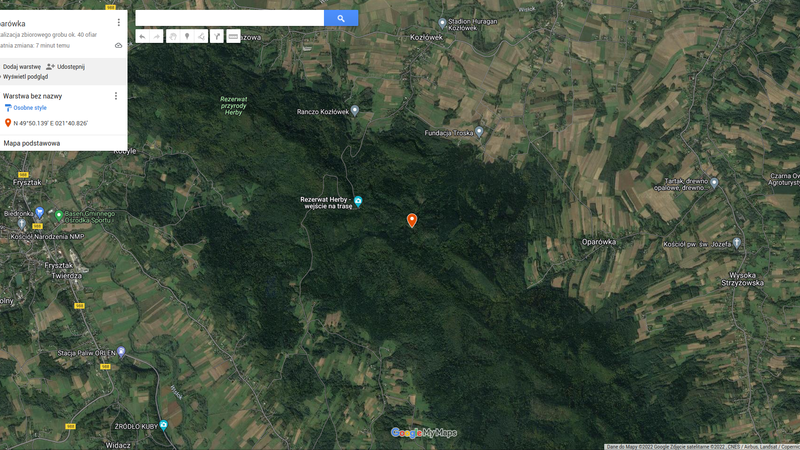 Markuszowa (Oparówka) fotografia satelitarna 1a
Markuszowa (Oparówka) fotografia satelitarna 1a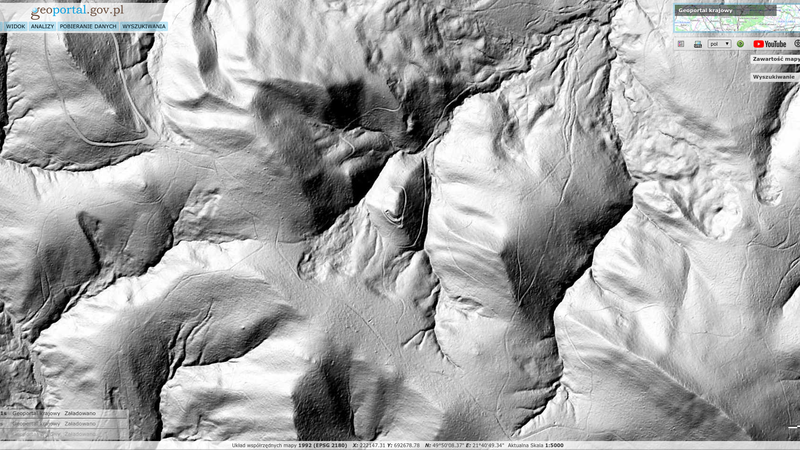 Markuszowa (Oparówka) LiDAR 1
Markuszowa (Oparówka) LiDAR 1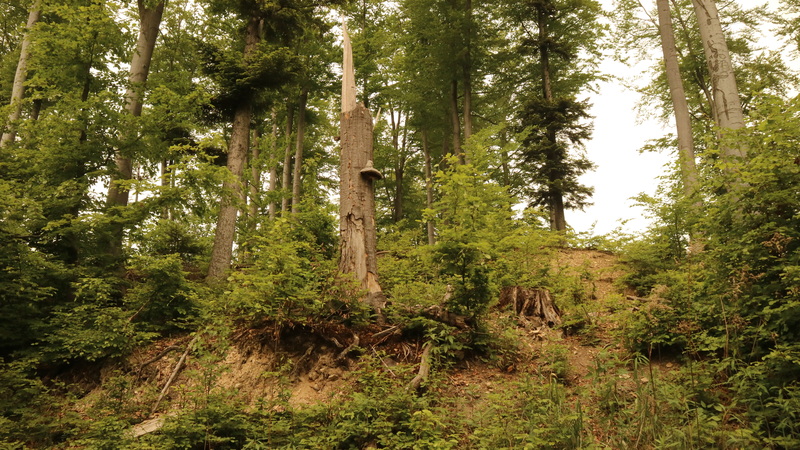 Markuszowa (Oparówka) fotografia 1 lokalizacji
Markuszowa (Oparówka) fotografia 1 lokalizacjiTranskrypcje
Contact and cooperation
We are still looking for information on the identity of the victims and the location of Jewish graves in Markuszowa (Oparówka). If you know something more, write to us at the following address: fundacjazapomniane@gmail.com.
Bibliography
Rączy E. Wydarzenia we wsi Markuszowa 1942-1943. Przyczynek do historii stosunków polsko-żydowskich w okresie okupacji in: Niepiękny wiek XX, Warsaw 2010
IPN Gk 283/111 and AIPN Gk 283/112 Files in a criminal case conducted against: Wojciech Biela, father’s name Ignacy, born on March 13, 1906 and Eugeniusz Niedziela, father’s name Władysław, born April 30, 1908
AIPN Rz 191/860 Files in the criminal case of the German military policeman Karl Pershke
Recording of the Zapomniane Foundation, Marian I., interview by Anna Skiba, Markuszowa January 2022
We have collected the materials about this village thanks to the funding provided by the International Holocaust Remembrance Alliance as part of the project “The rural Holocaust. Collecting and safeguarding the never recorded testimonies 100 forgotten Jewish graves 2021-2022”. The materials for this website were developed, digitized and made available as part of the project “Development of a digital archive of Jewish war graves outside the extermination camps and educational use of archive resources” thanks to funding from the Minister of Culture and National Heritage from the Cultural Promotion Fund.
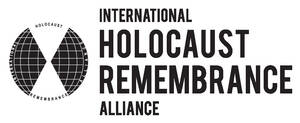
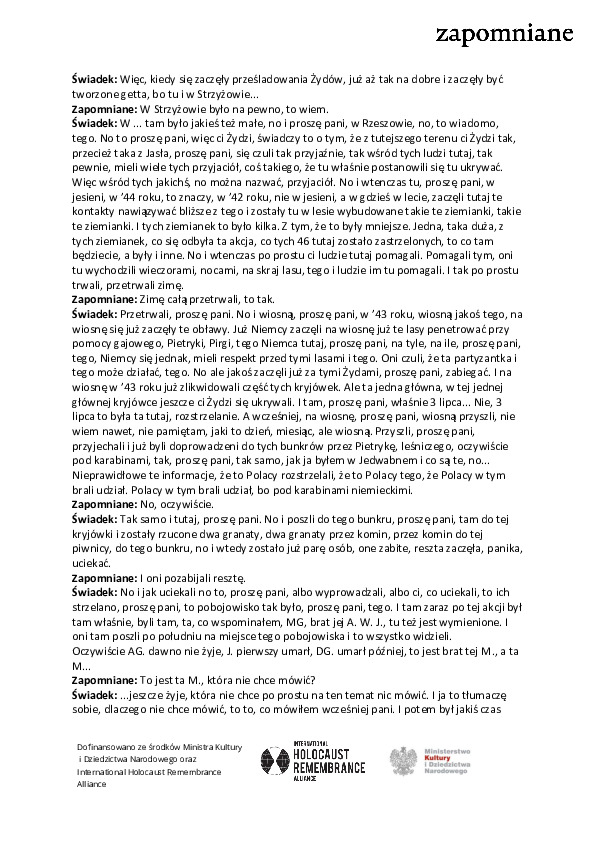 Markuszowa (Oparówka) - transkrypcja
Markuszowa (Oparówka) - transkrypcja